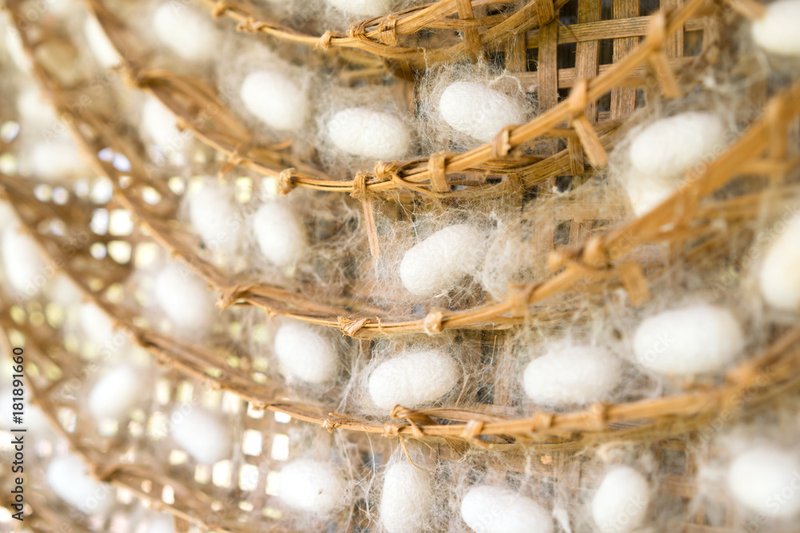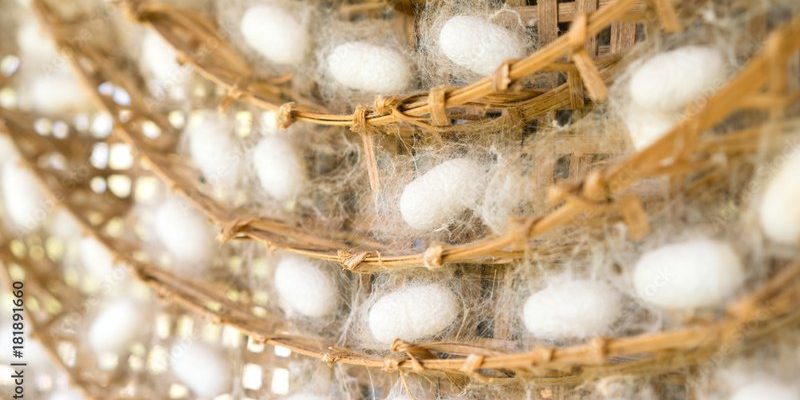
At the heart of silk production are silkworms, small caterpillars that transform leaves into threads of pure silk. Imagine watching a tiny creature spin its own home, creating something both delicate and strong. That’s essentially what these little wonders do! Understanding the history of silk production using silkworms reveals not only how humans have utilized this resource over the centuries but also how we’ve shaped this unique industry.
Understanding Silkworms and Their Role in Silk Production
Silkworms, specifically the species *Bombyx mori*, are the primary source of silk. These caterpillars are the larvae of silk moths, and they have a rather interesting life cycle. After hatching from eggs, they go through several growth stages called instars before spinning cocoons. This transformation is crucial because the silk fibers come from these cocoons.
You might be surprised to learn that it takes about 2,000 to 3,000 silkworms to produce just one kilogram of silk. That means for each meter of beautiful silk fabric, a whole colony of these little guys has been working hard! As they feast on mulberry leaves, they gain the nutrition needed to spin the silky threads that have become a sought-after commodity throughout history.
Silkworms have been domesticated for thousands of years. This process of cultivation for silk production is known as sericulture. It’s fascinating to see how humans recognized the potential of these little creatures and decided to raise them for their silk—almost like farming but with caterpillars!
A Brief History of Silk Production
The journey of silk production begins in ancient China, over 5,000 years ago. According to legend, silk was discovered by Empress Leizu when a silkworm cocoon fell into her tea, unraveling in the hot water. She saw the potential of the shimmering threads and began experimenting with them. This moment ignited the silk industry, making China the leading producer for centuries.
Silk was so valuable that it was often referred to as “the fabric of the gods.” The production secret was closely guarded by the Chinese for many years. Anyone caught smuggling silkworms or their eggs out of the country faced severe punishment. It wasn’t until around the 6th century that silkworms made their way to other parts of the world, brought by monks and traders who had recognized their worth.
Once outside of China, silk production spread to countries like Japan, India, and eventually Europe. Each region brought its unique techniques and traditions to silk-making, which added diversity to the fabrics we see today. The different climates and ecosystems impacted how silk was produced, leading to variations that enriched the textile industry.
The Process of Silk Production: From Cocoon to Cloth
So, how do we get from those tiny silkworms to the beautiful silk fabrics we love? The process is quite intricate and involves several key steps.
1. **Cocoon Harvesting**: After they spin their cocoons, silkworms are left to mature. Once they have fully formed the cocoons, farmers gather them carefully.
2. **Boiling**: To extract the silk fibers, the cocoons are boiled in water. This process kills the pupae inside and softens the fibers, allowing them to unwind easily.
3. **Spinning**: The softened silk is then unwound and spun into threads. Remarkably, each cocoon can yield up to 1,000 meters of silk thread!
4. **Dyeing and Weaving**: The final steps involve dyeing the silk for color and weaving it into fabric. This is where the real artistry comes in, as artisans create stunning patterns and textures.
It’s a blend of science and art, with each step requiring careful attention to detail. Honestly, it’s this craftsmanship that elevates silk from being just a material to a piece of wearable art.
Silk Production Around the World
While silk’s roots lie in China, today, silk production can be found across the world. Each country contributes its own techniques and traditions, which influence the characteristics of the silk they produce.
– **India**: Known for its rich silk varieties like *Tussar* and *Muga*, India has a long history of silk weaving. The vibrant colors and intricate designs reflect the country’s cultural heritage.
– **Japan**: Japanese silk, especially *Tsumugi* silk, is characterized by a fine texture and is often associated with traditional kimonos.
– **Italy**: Italy is famous for its high-quality silk, often used by luxury fashion brands. Italian artisans are known for their exquisite patterns and luxurious finishes.
As you can see, silk production has become a global affair, with each region bringing its unique flair to the fabric. This diversity not only enriches the market but also highlights the importance of silk in different cultures.
The Environmental Impact of Silk Production
You might be wondering about the environmental footprint of silk production. Like any agricultural practice, sericulture does come with its own set of challenges. The process requires significant land, water, and energy resources. Additionally, the boiling of cocoons, while effective for harvesting silk, raises animal welfare concerns.
That said, many silk producers today are adopting more sustainable practices. For instance, some farmers are focusing on organic mulberry cultivation, avoiding harmful pesticides, and chemical treatments. Others are exploring the use of silk waste, which can be repurposed into newer products like biodegradable packaging.
You might say this is a step in the right direction, showing how traditional industries can evolve to be more environmentally friendly. The silk industry is making efforts to balance the beauty of silk with responsible practices, ensuring it can continue to thrive for generations to come.
The Future of Silk Production
As we look ahead, the silk industry is at a crossroads. With rising demands for sustainable materials, innovation is key to its future. Researchers are exploring alternatives to traditional sericulture to minimize environmental impact. For example, lab-grown silk is being developed, using biotechnology to create silk proteins without raising silkworms.
In addition, there’s a growing focus on ethical practices. Consumers are becoming more conscious of their choices, prompting brands to prioritize transparency in their supply chains. This can lead to a more responsible and sustainable silk production model, benefiting both the environment and the communities involved.
It’s an exciting time for the silk industry, as it navigates new challenges and opportunities. We can only imagine how silk production might evolve, blending tradition with modern technology to create something that’s both beautiful and ethical.
The journey of silk production using silkworms is a beautiful story of nature, culture, and human ingenuity. From its ancient beginnings in China to its global presence today, silk has woven itself into the fabric of our lives—literally and figuratively!
As we continue to explore sustainable practices in this field, it’s clear that silk will remain a cherished material. Whether it’s a high-end fashion piece or a simple scarf, silk carries with it a rich history that connects us to the past while guiding us toward a more sustainable future.
So, the next time you admire a silky garment, remember the incredible journey it’s taken—from a silkworm munching on leaves to the luxurious fabric draping elegantly around you. It’s a legacy worth celebrating!

